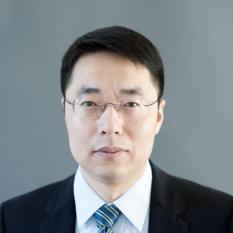Superconducting qubits: new platform for quantum optics
Shiyao Zhu1*, Dawei Wang1, and Haohua Wang2
1Physics, Zhejiang University, Hangzhou, 310000,
2Physics, Zhejiang University, Hangzhou, 310000,
*E-mail: Syzhu@zju.edu.cn
Abstract
The life time of superconducting quantum qubits is much longer than that of nature atoms and the coupling strength is much strong that that of nature atoms. Therefore, we can use superconducting quantum qubits to do many experiments which can not be realized with nature atoms. I will discuss four experiments as examples.

Biography:
Professor Shiyao Zhu received his Master degree from Shanxi University in 1982 and Ph D degree from Shanghai Jiaotong University in 1986. He is one of the famous quantum optics scholars in China,and has long been engaged in the research on quantum optics, laser physics and light and material interaction. His research focuses on the atomic coherence and its effects. He did the pioneer work on the non-inversing lasing, as well as spontaneous emission noise quenching. His work is of great significance to the basic research of quantum mechanics and quantum optics. Recently, his research is in the field of spontaneous radiation kinetics and Lamb shift without rotating wave approximation and quantum information. More than 300 academic papers have been published, including one in Science, one in Nature Physics, 12 in Physical Review Letters. The citation (Google Scholar) of his papers is more than 13,000 times with H-factor of 55, including one paper cited over 1000 times and 32 papers cited over 100. Professor Shiyao Zhu is the Fellow of the Chinese Academy of Sciences, of the American Institute of Physics, of the American Optical Society, of the British Institute of Physics. He received the National Natural Science Award of China in 1999 for his work on "spontaneous radiation and stimulated absorption of quantum interference", and the Lamb Medal in 2014.
Strong mid-infrared photoresponse in small-twist-angle bilayer graphene
Fengnian Xia (invited speaker)
School of Engineering & Applied Science, Yale University, New Haven, CT 06511
E-mail: fengnian.xia@yale.edu
Abstract
Biography: 
Fengnian Xia received the B.E. degree with highest honor in electronics engineering from Tsinghua University, Beijing, China, in 1998 and M.A. and Ph.D. degrees in electrical engineering from Princeton University, Princeton, NJ, USA in 2001 and 2005, respectively. He joined IBM Thomas J. Watson research center in Yorktown Heights, NY, USA as a postdoc in March 2005, and was a Research Staff Member before he started at Yale University as an assistant professor in September 2013. Currently he is the Barton L. Weller associate professor in engineering and science in Department of Electrical Engineering. His current research focuses on nanophotonics and nanoelectronics using emerging materials such as graphene, transition metal dichalcogenides, and black phosphorus. He explores the light-matter interaction and quantum transport in these low-dimensional materials and also identifies their potential applications in computing, flexible electronics, imaging, optical communications, and energy harvesting.
Professor Xia is on the editorial board of Nano Research (Springer and Tsinghua University Press), Advanced Optical Materials (Wiley), 2D Materials (IOP Science), and npj 2D Materials and Applications (Nature Publishing Group). He is also a primary guest editor of IEEE Journal of Selected Topics in Quantum Electronics.
Professor Xia’s honors include the National Science Foundation CAREER award (2016), the Office of Naval Research Young Investigator Award (2015), the IBM Pat Goldberg Memorial Best Paper Award (2014), the TR35 Award, MIT Technology Review’s Top Young Innovators under 35 (2011), the IBM Corporate Award, that corporation’s highest technical honor (2012), and the designation of the Weller Junior Professorship in Engineering and Science by Yale President in October 2015.

